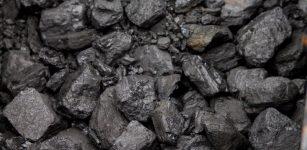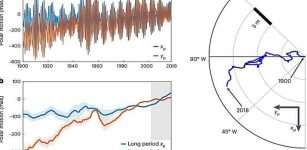Underside Of The North American Continent Is Dripping Away In Blobs Of Rock
Eddie Gonzales Jr. – MessageToEagle.com – Researchers have discovered that the underside of the North American continent is dripping away in blobs of rock — and that the remnants of a tectonic plate sinking in the Earth’s mantle may be the reason why.
A figure from the study showing rock dripping from the craton. The researchers hypothesize that the dripping is caused by the remnants of the subducting Farallon slab below the craton. Credit: Hua et al., Nature Geoscience
A paper describes the phenomenon, which was discovered at The University of Texas at Austin. It’s the first time that “cratonic thinning” may be captured in action.
“We made the observation that there could be something beneath the craton,” said the study’s lead author Junlin Hua, who conducted the research during a postdoctoral fellowship at UT’s Jackson School of Geosciences. “Luckily, we also got the new idea about what drives this thinning.”
Cratons are very old rocks that are part of Earth’s continents. They’re known for their stability and ability to persist for billions of years. But sometimes cratons undergo changes that can affect their stability or that remove entire rock layers.
For example, the North China Craton lost its deepest root layer millions of years ago.
What makes the discovery of cratonic dripping special, said the researchers, is that it’s happening right now. This allows scientists to observe the cratonic thinning process as it occurs.
The dripping is concentrated over the Midwest of the United States. Researchers assure there’s no immediate risk to the landscape. Mantle processes driving the dripping affect tectonic plate evolution slowly. Eventually, it will stop as tectonic plate remnants sink deeper into the mantle, reducing their influence over the craton.
Seismic waves pass through different geological features at different speeds. This map shows seismic speed in the Earth’s crust at 200 kilometers depth across the continental United States and portions of Central America and Canada. The North American craton (outlined in black dashes) has a high seismic velocity compared to its surroundings. Credit: Hua et al., Nature Geoscience.
The discovery is most important to geoscientists who study continents over their entire lifespan, said co-author Thorsten Becker, a professor at the Jackson School’s Department of Earth and Planetary Sciences and Institute for Geophysics.
“This sort of thing is important if we want to understand how a planet has evolved over a long time,” Becker said. “It helps us understand how do you make continents, how do you break them, and how do you recycle them [into the Earth.]”
The discovery came from a project led by Hua, now a professor at the University of Science and Technology of China. They created a new seismic tomographic model for North America using an approach by co-author Stephen Grand, now professor emeritus at the Jackson School.
This computer model, which uses seismic data collected by the EarthScope project, revealed new details about the geologic processes happening in the crust and mantle underlying North America.
“Because of the use of this full-waveform method, we have a better representation of that important zone between the deep mantle and the shallower lithosphere where we would expect to get clues on what’s happening with the lithosphere,” Becker said.
This model first showed the drips, helping researchers deduce that the Farallon Plate, subducting under North America for about 200 million years, could drive the process despite being 600 kilometers from the craton.
First seismically imaged in the 1990s by Grand, the plate played a key role in shaping the North American plate. Researchers believe it is now eroding the continent from below by redirecting mantle flow to shear the craton’s base and releasing volatile compounds that weaken it.
Although the dripping is concentrated in one area of the craton, Hua said that the plate appears to be interacting with material from across the entire craton, which covers most of the United States and Canada.
“A very broad range is experiencing some thinning,” Hua said.
When the researchers built a computer model of these dynamics, the model craton dripped when the Farallon Plate was present. When the plate was removed, the dripping stopped.
Becker acknowledges that computer models have limitations. But the model’s resemblance to the data is a good sign, he said.
“You look at a model and say, ‘Is it real, are we overinterpreting the data or is it telling us something new about the Earth?,’” Becker said. “But it does look like in many places that these blobs come and go, that it’s [showing us] a real thing.”
Written by Eddie Gonzales Jr. – MessageToEagle.com Staff Writer











